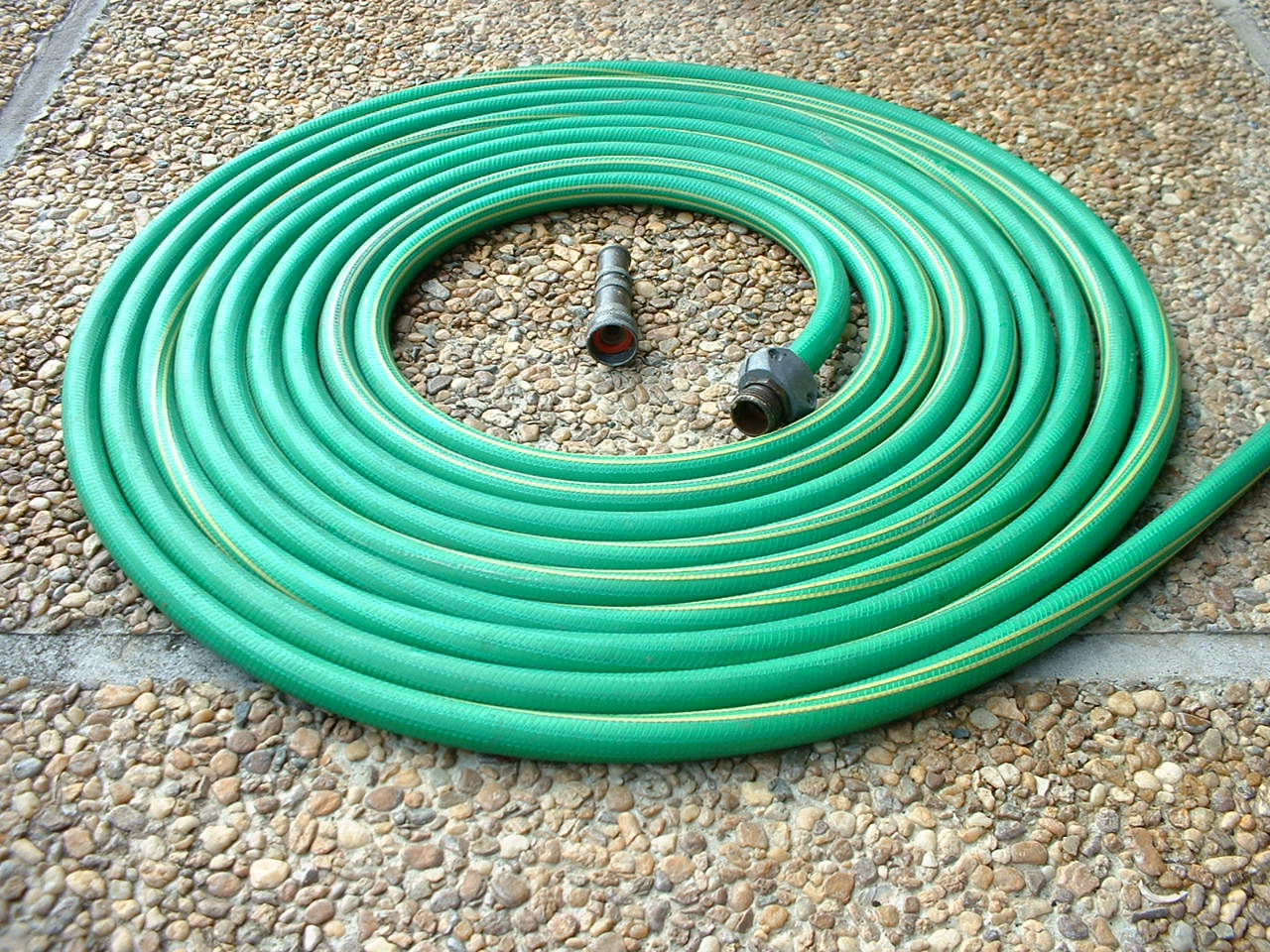The PermaDesign Weblog, with Nate Downey and Melissa McDonald!
Roof-Reliant Landscaping™ Step 18D: Water Distribution - Hose watering

By Nandhp - Own work; Self-published work by Nandhp, CC BY-SA 3.0, https://commons.wikimedia.org/w/index.php?curid=691443
Hose watering
On the other side of the distribution spectrum is conventional hose watering, which requires nothing more than an ON/OFF valve, a frost-free hydrant connected to a pump and someone willing to move a hose. A nozzle should be added to control the flow rate of water through the hose.
If you are considering watering with a hose, make sure you check your landscape design for ways that make this chore easier. Especially on steep sites, you can reduce watering time and effort by grouping your plants so that several can be watered efficiently with each hose placement. This can be accomplished by properly grading densely planted garden beds and also by placing the most water-thirsty plants closest to your spigot locations. With grading that effectively uses gravity, a hose watering system can leave much of the work to nature. Even if you are very committed to using drip irrigation, it is beneficial to also install a frost-free hydrant for spot watering with a hose.
Advantages and Disadvantages of Hose Watering
The best part about a hose watering system is the low cost of installation. There are no multiple valves, tubing, emitters, stakes or any other components of drip irrigation. There are also no trenches to dig and no water lines to cover up with mulch or soil. Hose watering includes, quite simply, a hydrant or valve at the point of hydraulic lift, a hose and a spray nozzle.
The most difficult part of hose watering is that the watering needs to be done regularly, carefully and consistently until your plants are wellestablished. Many people simply do not have the time for hose watering by hand, so they often decide to spend the extra money for drip irrigation with its inherent precision and automation.
03/03/2016 | (0) Comments










Comments